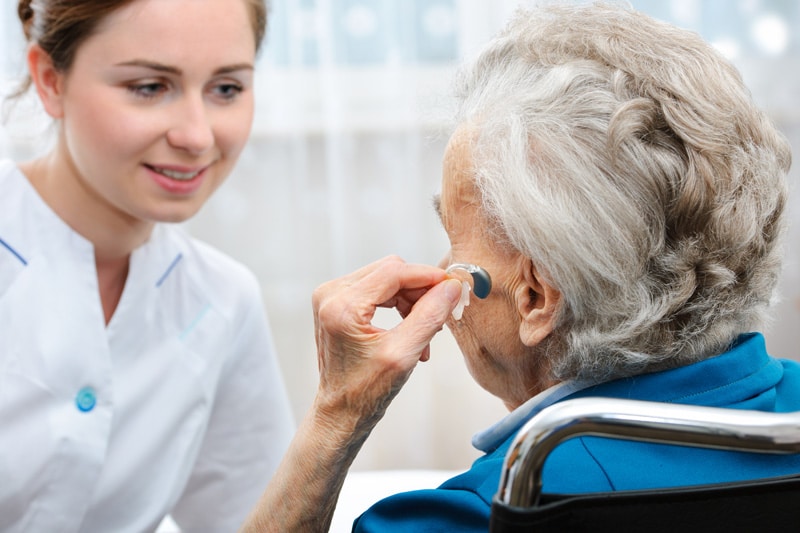*Always check with your hearing aid manufacturer and audiologist for how to correctly care for your hearing aid – these are general guidelines only*
People who wear hearing aids are at a higher risk for ear wax impaction, which can lead to a change in hearing aid performance. When placed in the ear, hearing aids can stimulate an over production of wax, as well as interrupt the self-cleaning mechanism of the ear, blocking the wax’s natural pathway out.

Why Does This Matter If You Wear Hearing Aids?
Ear wax is a naturally occurring substance that lubricates and protects the ear canal. However, an excess of wax in the ear canal can lead to unwanted symptoms, such as:
- Loss of hearing
- Ringing the in ears
- A feeling of fullness
- Itching
- Pain
If you wear hearing aids, allowing wax to build up behind your aid can lead to the following additional problems:
- A reduction in the intensity of sound reaching the ear drum
- A reduction in mid and high frequency sound perception
- Damage to the hearing aid itself (estimates from hearing aid manufacturers indicate 60% to 70% of all hearing aids sent for repair are damaged because of contact with ear wax)1
- The hearing aid fitting poorly within the ear canal and not sealing properly
- High pitched, audible whistling due to feedback
Avoiding ear wax build up behind the hearing aid is important to ensure effective operation of the hearing aid. According to recently updated industry guidelines2, you should ensure that you have your ears checked for wax build up every 3 to 6 months, and be proactive in ensuring wax is manually removed if needed.
It is also important to clean the wax trap regularly, and replace this trap every 3 months, or whenever your aid is not working properly. Always remember to detach the earmolds one at a time to avoid confusion.
Earworx uses dry and gentle micro suction to remove built up ear wax, undertaken only by AHPRA regulated staff who are fully qualified in the process.
Our core business is wax removal – we help people every day to remove wax and alleviate symptoms related to wax build up or issues related to hearing aid performance caused by wax,” – Earworx Director Lisa Hellwege said.
Removal of wax via micro suction is one of the leading earwax treatments available today. It is the same treatment that is used by ear, nose and throat specialists across Australia.
Earworx made this procedure available to the general public last year and has now taken a big step towards better ear health for Hobart residents by becoming a St.LukesHealth provider; a health care rebate is now available for the service.
If you’re experiencing any of symptoms above, or have wax build up behind your hearing aids, give us a call on 1800 327 967 or book an appointment online today.
Sources:
1) Ballachanda BB. Theoretical and applied external ear acoustics. J Am Acad Audiol. 1997;8:411-420
2) Schwartz et al 2017, Clinical Practice Guideline (Update): Earwax (Cerumen Impaction), Otolaryngology-Head and Neck Surgery Vol 156 (IS) SI-S29




